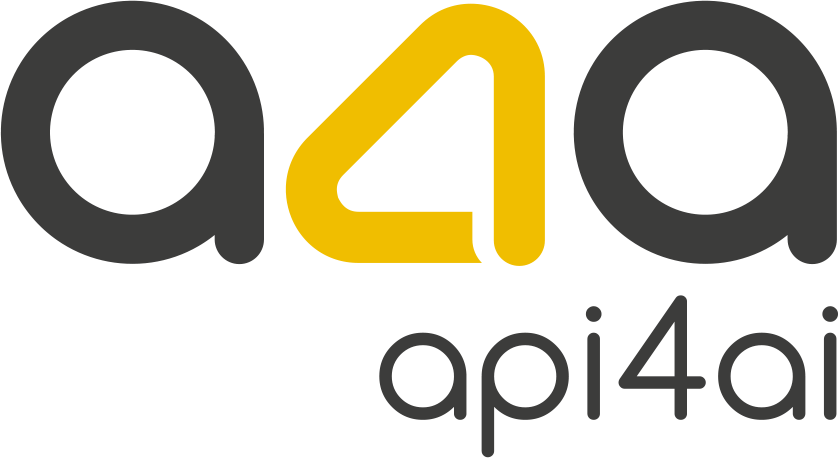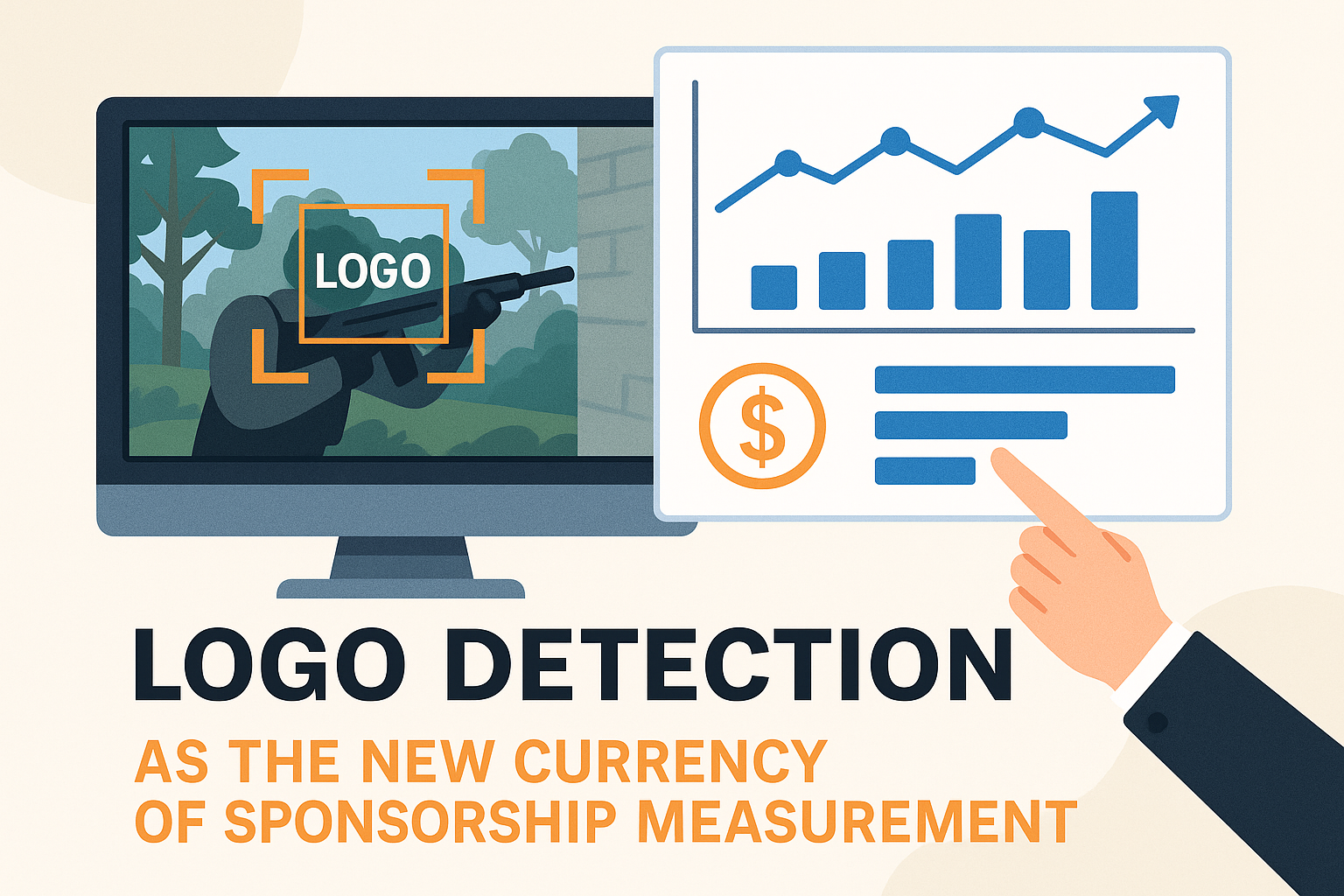Measuring Brand Visibility in Esports Streams
Introduction — From Static Banners to Dynamic Brand Moments
Esports has moved from niche tournaments to a mainstream entertainment powerhouse, drawing audiences in the tens of millions and attracting sponsorship budgets once reserved for major league sports. Yet while the size of the opportunity is undeniable, the way sponsorship value is measured has not kept pace with the complexity and speed of competitive gaming.
In traditional sports, a brand might buy banner space in a stadium or an ad spot during halftime, confident that their logo will be visible to cameras and audiences for a predictable amount of time. In esports, however, there is no such guarantee. Matches unfold across virtual arenas, player perspectives change in an instant, and broadcast feeds can shift rapidly between angles, overlays, and in-game action. A sponsor’s logo might be prominently displayed one moment and completely absent the next.
This volatility creates a fundamental challenge: sponsorship value in esports is not just about whether a logo exists within the game environment — it’s about actual visibility to the audience during the moments that matter. Without accurate data on how often and for how long a brand appears on-screen, negotiations rely on assumptions rather than evidence. That gap can mean overpaying for “phantom impressions” or undervaluing high-impact placements that occur during peak viewership moments.
Forward-thinking brands are now turning to advanced computer vision to close this measurement gap. By detecting and tracking brand marks directly in the video stream — frame by frame — marketers gain a true picture of their sponsorship footprint. Instead of vague reach estimates, they receive precise exposure metrics that stand up in boardroom discussions and contract negotiations.
For executives overseeing marketing budgets, this shift represents more than a new reporting method — it’s a transformation of sponsorship into a measurable, optimizable asset. When brand visibility can be quantified with the same rigor as digital ad impressions, esports deals stop being gambles and start being calculated investments with clear ROI potential.
Why Traditional Sponsorship Metrics Fall Short in Esports
For decades, sponsorship valuation has relied on relatively static formulas: event attendance, scheduled broadcast time, and fixed signage visibility. These methods were built for predictable, slow-moving environments — like stadium sports — where the camera angle, ad placement, and audience viewership are largely stable.
Esports upends that stability. Matches are dynamic, with split-second camera switches, multiple player perspectives, and unpredictable in-game events. A sponsor’s logo might appear prominently on a virtual billboard for three seconds before disappearing entirely as the camera follows the action elsewhere. To complicate matters further, overlays, player stats, and graphics often cover parts of the screen, temporarily obscuring branding.
From a business standpoint, this unpredictability makes traditional measurement unreliable:
Fast scene changes: High-speed gameplay means brands may be visible only fleetingly, far less than assumed in pre-event sponsorship decks.
Variable camera focus: Broadcasters highlight different perspectives — sometimes the in-game environment, sometimes the players themselves — altering brand exposure unpredictably.
Platform fragmentation: Viewers are spread across Twitch, YouTube Gaming, Facebook Gaming, and regional platforms, each with different stream qualities and coverage angles.
Overlay interference: Sponsor logos can be hidden by live scoreboards, chat feeds, or promotional banners.
The consequence is significant: marketers often negotiate deals based on planned exposure rather than verified exposure. This can lead to inflated sponsorship fees when logos receive far less on-screen time than promised — or undervalued deals when a placement turns out to have greater visibility during high-stakes moments.
For C-level decision-makers, this isn’t just a technical problem — it’s a budgeting and ROI problem. Without hard data on brand presence, marketing spend in esports becomes speculative, and the risk of misallocation increases. In a competitive sponsorship market, relying on assumptions can mean either leaving money on the table or failing to justify costs to stakeholders.
The solution lies in transitioning from estimated reach to verified on-screen presence — a shift that requires technology capable of tracking every frame, across every stream, to give brands the transparency and leverage they need.
Logo Detection as the New Currency of Sponsorship Measurement
In an environment where every second of audience attention counts, logo detection technology is redefining how brand visibility is measured in esports. Instead of relying on assumptions or static placement plans, marketers can now obtain an exact, frame-by-frame record of how their brand appears on-screen — across every camera angle, every match, and every streaming platform.
How it works:
Computer vision algorithms, trained to recognize specific brand marks, scan the video feed in real time or post-event. These systems can identify a logo whether it’s partially visible, displayed at an angle, moving, or momentarily obscured. Unlike manual review, which is labor-intensive and error-prone, AI-powered detection runs at scale, analyzing thousands of minutes of gameplay with consistent accuracy.
The capabilities that matter to executives:
Quantifiable on-screen time: Precisely measure the number of seconds your logo appears to the audience.
Context-aware detection: Identify not just when a logo is visible, but also during what moments — such as pivotal plays, high-viewership peaks, or broadcast highlights.
Competitive benchmarking: Track your own visibility alongside other brands to understand share of voice and positioning.
Cross-platform coverage: Capture exposure data from Twitch, YouTube Gaming, Facebook Gaming, and other channels without manual consolidation.
From a business perspective, this transforms logo placement from a fixed-cost gamble into a measurable asset. Sponsors can justify higher rates when they demonstrate dominant visibility, or renegotiate when promised exposure falls short. Tournament organizers, in turn, can package and price placements based on verified performance, increasing trust with sponsors.
Where technology fits in: Ready-to-use solutions like a Brand Recognition API can plug into existing analytics stacks, delivering timestamped visibility reports within hours instead of weeks. For organizations with unique requirements — such as tracking multiple logo variations, integrating with marketing dashboards, or processing streams in near real-time — custom AI development ensures a fully tailored measurement system.
Ultimately, logo detection doesn’t just record visibility — it turns it into currency. Armed with objective, defensible data, executives can make sponsorship decisions with the same rigor applied to other marketing channels, ensuring esports investments deliver measurable, repeatable returns.
Turning Raw Exposure Data into Negotiation Power
Data on brand visibility is only valuable if it drives strategic decisions. In esports sponsorships, the ability to translate raw detection metrics into clear, business-ready insights can directly impact contract values, renewal terms, and long-term partnerships.
From seconds to strategy
When AI-powered logo detection reports show exactly how long a brand appeared on-screen, the numbers alone are compelling — but their real power emerges when tied to commercial outcomes. For example, a sponsor that can demonstrate 20% more exposure than competitors in the same event is in a strong position to request premium rates in future deals. Conversely, if actual exposure falls short of contractual expectations, the data becomes the foundation for negotiating compensation, bonus placements, or revised terms.
Key executive-level metrics:
Total on-screen time: A clear measure of how much audience attention the brand actually received.
Share of voice: Comparison of your brand’s visibility versus competitors in the same broadcast.
High-impact moments: Correlation between brand visibility and peak engagement periods — such as game-winning plays or critical tournament stages.
Placement performance: Identifying which logo locations (in-game billboards, team jerseys, overlays) deliver the highest visibility for the investment.
Negotiation advantages:
Proof over promise: Replace “we believe” with “the data shows,” creating a fact-based discussion with organizers.
Value justification: Demonstrate ROI to internal stakeholders, ensuring continued budget support for esports sponsorship.
Future optimization: Use historical visibility data to choose placements with the greatest proven impact for upcoming events.
Example in practice:
A brand investing in team jersey placements could discover through exposure analytics that their logo was visible for a total of 14 minutes during a match, compared to a competitor’s 9 minutes. When those minutes align with highlight clips viewed millions of times on social media, the sponsorship’s value far exceeds its original estimate — information that directly supports rate increases in future contracts.
By reframing logo visibility as negotiation currency, executives gain a measurable advantage in an increasingly competitive sponsorship market. Instead of accepting generic exposure estimates, they can enter the boardroom with precise, verifiable metrics — turning every second of visibility into documented value.
Integrating Brand Visibility Analytics into Marketing Strategy
For executives, the value of brand visibility data extends far beyond sponsorship reporting. When integrated into the broader marketing ecosystem, these insights can inform strategic decisions across campaign planning, budget allocation, and brand positioning — transforming sponsorship analytics from a post-event scorecard into a real-time growth lever.
Closing the loop between exposure and engagement
The most powerful use of visibility metrics comes when they are linked with audience behavior data. By correlating on-screen logo moments with spikes in chat activity, social media mentions, or website traffic, marketing leaders can identify the moments when brand presence actually drives consumer action. This connection transforms brand exposure from a passive metric into an active performance indicator, guiding both creative and media investments.
Optimizing sponsorship mix
Over time, exposure analytics reveal which placements — whether in-game billboards, broadcast overlays, or team jerseys — deliver the greatest return. Instead of renewing all sponsorships based on tradition or relationship alone, brands can selectively double down on high-performing formats while reallocating budget from underperforming ones. This not only improves ROI but also strengthens the brand’s negotiating position in competitive bidding situations.
Real-time adaptability
For live tournaments or multi-day events, integrating detection technology into dashboards allows marketers to monitor brand presence in near real-time. If visibility is lower than expected, teams can respond immediately — adjusting camera angles, activating secondary placements, or triggering reactive campaigns on social media to capture audience attention during downtime.
Cross-channel amplification
Visibility data doesn’t just inform esports strategy — it feeds into the broader brand narrative. High-visibility moments can be clipped, repurposed, and distributed across social channels, ad campaigns, and earned media outreach, extending the life and impact of each sponsorship impression. This multiplies the return on investment without additional sponsorship spend.
Strategic advantage for the C-suite
For CMOs, visibility analytics become a decision-support tool for annual sponsorship planning. For CFOs, they provide hard evidence to justify spend and protect margins. For CEOs, they offer reassurance that the brand’s presence in one of the fastest-growing entertainment sectors is not just a trend-following exercise, but a measurable, optimizable growth channel.
By embedding brand visibility analytics into marketing strategy, organizations shift from simply counting exposure to activating it — ensuring every second of presence in an esports stream contributes directly to brand equity and business outcomes.
Technology & Implementation Considerations
Moving from concept to execution in brand visibility analytics requires more than just interest — it demands the right technological approach. For executives, the implementation stage is where strategic vision meets operational feasibility, budget constraints, and long-term scalability.
Infrastructure choices: Cloud vs. On-Premise
The first decision is where and how the detection system will run.
Cloud-based processing offers scalability and rapid deployment, allowing organizations to handle peak streaming loads without large capital investment. It’s ideal for brands and agencies managing multiple simultaneous broadcasts or international events.
On-premise solutions may be preferable when dealing with sensitive sponsorship agreements, proprietary broadcast content, or strict compliance requirements. They offer more control but require greater upfront investment in hardware and technical expertise.
Integration with existing systems
Visibility analytics should fit seamlessly into the organization’s marketing, analytics, and sponsorship management tools. This may include:
Pulling video streams from multiple sources such as Twitch, YouTube Gaming, and regional platforms.
Connecting exposure data to CRM systems for correlating sponsorship moments with customer engagement.
Feeding metrics into business intelligence dashboards for unified reporting to leadership.
Accuracy and adaptability
Esports is visually diverse — different games, team branding, camera work, and graphic overlays. Detection models must be trained not only on generic brand logos but also on variations in color, scale, and placement. For global sponsors, region-specific branding and co-sponsorships add further complexity. Continuous model refinement ensures consistent accuracy as visuals evolve.
Latency and processing speed
For organizations aiming to react in near real-time, processing speed becomes a priority. Low-latency detection allows tournament organizers or brand managers to adapt camera angles, placements, or complementary digital campaigns mid-event, maximizing impact while the audience is still engaged.
Scaling over time
A practical implementation path often begins with a pilot project — analyzing a single tournament or team sponsorship — before expanding to cover multiple events or full-season contracts. This staged approach reduces risk, allows for model fine-tuning, and builds internal confidence in the system.
Role of ready-made APIs and custom development
Off-the-shelf solutions, such as a Brand Recognition API, can drastically shorten time-to-market for initial deployments. For more complex requirements — such as processing multiple feeds simultaneously, integrating with proprietary analytics stacks, or handling niche logo variations — custom AI development ensures the system matches the organization’s exact needs.
C-suite takeaway
Technology selection is not just an IT decision — it’s a strategic one. The chosen approach will determine not only the accuracy and timeliness of visibility data but also the organization’s ability to monetize it, defend sponsorship valuations, and maintain a competitive edge in the fast-evolving esports market.
Conclusion — Quantifying Brand Presence for a Competitive Edge
In esports, sponsorship value is no longer dictated by where a logo is placed — it’s defined by how often, how long, and during which moments it is actually seen by the audience. The speed and unpredictability of competitive gaming make traditional measurement methods inadequate. Without precise visibility data, brands risk overpaying for underperforming placements or missing opportunities to leverage high-impact moments.
By adopting AI-powered logo detection, organizations gain the ability to measure sponsorship exposure with the same rigor applied to digital advertising or media buys. Frame-by-frame tracking turns fleeting appearances into quantifiable assets, allowing executives to negotiate from a position of strength, allocate budgets based on proven performance, and justify spend to stakeholders with objective evidence.
The strategic benefits extend well beyond reporting. When integrated into broader marketing operations, visibility analytics can guide placement choices, amplify standout moments across channels, and inform long-term sponsorship strategy. This creates a closed feedback loop — transforming esports sponsorship from a static expense into a dynamic, data-driven growth channel.
For the C-suite, the message is clear: esports is one of the fastest-growing entertainment markets, but growth alone doesn’t guarantee value. The brands that will win are those that treat visibility as currency — measuring it accurately, optimizing it continuously, and leveraging it decisively in negotiations.
In a sponsorship landscape where attention is fragmented and competition is fierce, the difference between market leaders and followers will be the ability to prove, in hard numbers, that every second of on-screen presence delivers a measurable return.






